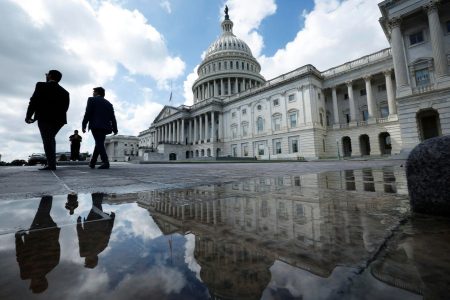In this episode of Tax Notes Talk, George Ford with the Phoenix Center for Advanced Legal and Public Policy Studies discusses film tax incentives and their effectiveness in attracting business to states.
Tax Notes Talk is a podcast produced by Tax Notes. This transcript has been edited for length and clarity.
David D. Stewart: Welcome to the podcast. I’m David Stewart, editor in chief of Tax Notes Today International. This week: roll credits.
Film tax credits play a big role in where movies get made. From Marvel blockbusters to indie films, production companies and industry players alike consider what kind of tax breaks they can receive by filming in one high tax credit location versus a lower credit location.
So what do these film credits look like in the United States and have they been successful? Here to talk more about this is George Ford, chief economist at the Phoenix Center for Advanced Legal and Public Policy Studies. George, welcome to the podcast.
George S. Ford: Thank you, Dave. Glad to be here.
David D. Stewart: Why don’t we start off with the basics of what are the film tax credits that we’re talking about?
George S. Ford: The credits or rebates or various forms of tax incentives, we call them tax incentives to cover all the bases, but what states do, some counties do, and some countries do — Canada in fact has a national policy as well as some European countries — is they offer various tax incentives in an effort to attract movie, film, television production to their countries, their states, and their counties.
Usually these incentives are 20 to 40 percent of the amount of money of qualifying expenditures spent in the state, and they can come in various forms, rebates, incentives, transferable credits, various types of incentives to get the movie industry to the state.
David D. Stewart: So what is the purpose of these tax credits? What advantage does it bring to the government?
George S. Ford: For the most part, the purpose as stated is to create jobs, to draw investments to an area, to increase tourism, big area for some places. California gets a lot of tourism related to film and television, New York as well. So all this economic-development-type arguments are used to support tax incentives for the film industry.
David D. Stewart: So what has been the general public’s response to these credits? How do voters feel about this money being handed out to the film industry?
George S. Ford: I think the public, there hasn’t been a lot of surveys on that, but I think often the public is fairly accepting of such incentives. The film industry, television industry excites people. They’re very much interested in fame and being around or associated with movies and television. So I think the public is generally fairly accepting of it.
I haven’t seen a lot of public resistance to it at all really pretty much anywhere. I may have missed some things. There is some resistance to it of course, but generally it’s fairly well-supported. I think they did a survey in Georgia, for example; 80 percent of the people look favorably on film tax credit, so it’s pretty popular with the people.
David D. Stewart: I’m familiar with that sort of “Made in Georgia” logo that I see at the end of so many things. What have we learned about how these tax credits are working in Georgia?
George S. Ford: Well, I mean you took Georgia from basically a television, movie nobody to now one of the hottest places for film and television production in the country. They had probably 3,000 people employed in the film industry between say 2000 and 2010 and then after that it just took off, and I think there’s 24,000 or 25,000 people employed in that industry today.
They have more square footage of studio space than Los Angeles does. The Avengers is there. We had The Walking Dead, of course, and multiple other television shows and movies being filmed there. So it’s a hotbed right now for film and television production. So if that’s what they wanted in the state, that’s definitely what they got.
By the way, you see the logo before the movie starts and after the movie starts because you get an extra 10 percent tax credit if you do that. So it’s a 30 percent tax credit in Georgia if you put the logo in there. And there are examples where some movie actually failed to put the logo at the end of the movie and lost all their credits. That wasn’t in Georgia, I don’t think, but that has happened.
David D. Stewart: Well, let’s talk a little bit more in depth on this Georgia system. So what are their credits and how do they work?
George S. Ford: It’s a 20 percent credit generically for qualifying expenditures in the state and 30 percent if you put the logo on. So of course everybody puts the logo on. The tax credits are transferable. It doesn’t make a lot of sense to give a tax credit to a California — or New York — or anywhere-else-based-entity that doesn’t pay much taxes, if any taxes, in the state of Georgia. So you are able to sell the tax credits to other parties who do have a tax liability in Georgia.
It’s a complicated process, but logically fairly straightforward and that’s really, I think, when the tax credits really began to have a big impact. You see it both in New York and in Georgia that the employment in those two areas and additional employment from the tax credits attributable to the tax credits really took off in the early and mid-2010s. And that’s because they had finally commoditized tax credits where they could be easily bought and sold amongst in parties and that’s when it really became great interest to television and movie studios.
It really can be a very tedious process. I mean, every state has different rules on how much money you can spend, how much the production is matters in most states. There are limits to how much you can get in credits from most states. Sometimes you can get credits for high-dollar talent, sometimes you can’t. Some states require that the entire budget be spent in a particular state. I mean, there are lots of different rules and in many states all these expenses are audited, so you have to have an auditing team, an accounting team that keeps really good records of what you spend, where you spend it and what it is in order to qualify for the tax credit.
But I think Georgia’s fairly generous in that. I think their rejection rate is probably 3 to 5 percent or something like that of expenses. So it’s a very attractive fee. Thirty percent is attractive in the sense that it’s uncapped so that there’s no limit to how much money can be credited. And it’s fairly obvious if you look at the data that the studios really like those conditions.
David D. Stewart: Well, in that data, do we have a sense of how much money Georgia has put into the film industry?
George S. Ford: It varies a bit. I mean, I think in 2022 it was $1.3 billion. Few years before that, I think it was less than $700 million, but it varies to some extent. But Georgia spends a lot, probably $1 billion a year on average on it. Other states of course spend a lot less because they have caps or just don’t have the amount of interest on the industry.
David D. Stewart: Is there a sense of how much economic activity that $1 billion-plus is spurring in Georgia?
George S. Ford: Well, that’s kind of how I got into this, the more public way at least. There’s a big debate about whether or not these programs have an impact at all. I mean, there’s been some research on it. I think most of the research is questionable to quote a problem before 2015 or so because you just didn’t have a very good financial mechanism for trading tax credits. And you do see this surge in employment and people who have better programs after that.
But I think definitely in Georgia, I don’t think there’s any question that if job creation was your objective that it was successful. The industry has grown tremendously in that state. At the same time, the tax credits were available when financing of tax credits became more normal. I think, I looked at New York, you see a pretty big bump in New York when they improved their tax incentive programs, but in other states that have more limited programs, have caps and lower credits or untransferable credits, you don’t get as much activity.
So it’s going to be very specific to the program. This is a highly competitive process, but from what I understand, tax incentives are the No. 1 by a long shot reason for choosing locations for filming, and that’s both domestic and international. There are people who are completely separate, accountants basically saying, “Here’s where you’re going to film the show or this movie based on the finances of it,” because it’s not a trivial amount of money. Particularly for smaller budget films, it can be quite beneficial. The bigger studios have the money to do it, but still it’s great benefit to get 20 or 30 percent of your budget back just by shooting in a particular place, particularly if you shot inside, which a lot of movies are.
David D. Stewart: Are we seeing movies get shifted around based on these tax credits, like a movie that you might expect to be shot someplace ends up someplace else?
George S. Ford: Absolutely. I mean, it is a driver of location. I don’t think that there’s anything even that would be close to that. I mean, there are other things that matter. I mean, when you have a writer strike in the U.S. you might go to some foreign country, and you may choose a less exciting incentive plan, but if you can’t get the workers then you have to do that sort of thing.
I know that Georgia has a program, it’s like a vocational school for production people that teach you how to be a gaffer, operate a camera, or whatever the production process needs. And that is certainly a benefit. If you have an attractive incentive program and you have crew available, then that certainly makes it easier. But I suspect, and from what I understand of people’s discussions who are more intimately involved with it, is that the incentives are really what drive location choice.
We might ought to go back to the economic issues too because that’s most of the work I’ve done in this area about. There’s a huge debate about how to measure what the return is on tax incentives for films. I mean, if you think of the objective, which I think, it’s everybody’s objective at the state level, government level is to grow the industry, grow jobs, grow investment, grow staging, grow lighting, whatever it is that you want to do, anything associated with the industry and then tourism and all the things that go along with having a big film industry. So you can measure using the standard models for measuring these sorts of things, which are called input-output models. Then you can say, “OK, what’s a $1 million spend worth in terms of jobs and economic output? What would be a $100 million worth?” Or whatever the number is.
And then you sort of feed it into these models and these models spit out, you grow the movie industry by a $100 million, you’d get X number of jobs, you get X number of industry jobs, and then you’d get Y number of jobs that are associated with the industry and then Z number of jobs that are just people spending money buying gas, food, hotels, or whatever it may be. So these models produce an estimate of the footprint of an industry of a given size, and that’s typically how we measure these impacts of these programs. There are problems with this approach. They’re static models for one thing, and this is most likely a very dynamic process where the tourism probably is going to develop over many, many years and not just in one year.
So there are issues with those models, but there’s also a huge debate about what is it that we’re going to measure and the largest disparity; and the disparities are enormous. The proponents of film tax credits, mostly the film and television industry, among other industries who may be affected by their involvement in an area, they find $6 for every $1 of film tax credit, maybe $8 for every $1 of film tax credit of benefit in an area. And that includes all the labor, that includes gross domestic product, and whatever else they may be measuring. And that’s the sort of thing they input-output out. The opponents of it, you’ll see articles about the tax incentive returns has a $0.15 return on investment. That is always a measure of state and local tax effects of the growth of the movie industry. So the state spends $1 on tax credits and gets $0.15 in state and local tax revenues back on that. But I’ve never seen anybody or any government say, “We’re going to implement a tax incentive in order to increase taxes.”
If you want to increase taxes, you increase taxes. But that’s where this debate centers, and that’s why you see these wildly different estimates of the return on investment. And by return I don’t mean a percent return, I mean a dollar return per dollar of tax incentive cost. In Georgia, for example, I’d estimated that they spent $1.3 billion, and I estimated they get $660 million back in taxes or something like that. So you got a $0.40 tax return on your investment. On the other hand, the number of jobs, the amount of labor income, the amount of value added, all those things in the state are well above $1.3 billion. It depends on how you want to estimate that, but significantly above the amount of money the states spend. So this is sort of where the debate sits in the political sphere where there are people that are opposed to the programs who pick a very narrow view of what benefits are, which is just tax dollars, and there are those who take a broader view of what the benefits are, which are jobs and investments, things like that.
And I think the latter is what states say they’re interested in receiving as a benefit of their investment. So I think that approach is probably more consistent, and it’s definitely more consistent with what the intent of the tax incentive is, but the debate rages on. But anytime you see a super low return on these programs, at least in bigger states like Georgia and New York, which I’ve studied, all these little numbers are just measuring what the effect of taxes on. I don’t know why you would look at that, honestly. If I could get 10,000 jobs in the state, it just so happens to be in some kind of industry that doesn’t have to pay state income taxes when I pass that up, and I don’t think any government would pass that up. Taxes are a burden on the economy, not a benefit to it.
David D. Stewart: Is there an argument from critics about how these tax credits are basically just moving activity from one state to another? Or is this actually spurring on additional activity?
George S. Ford: It will do both. There is a competitive nature to this. It’s been a very aggressive competitive aspect to film tax credits. As we were talking about earlier, this is how the studios choose where they’re going to shoot their movies. I think Netflix has three offices, global offices, many attorneys in them parsing through the rules and requirements, which do change over time saying, “OK, here’s where you’re going to shoot.” So there is that, but anytime you reduce the cost of making something, you also get a growth in the industry itself. So there’s both a cannibalization of production from other places, movement from California to Georgia of production, but there’s also just a growth, overall growth in production itself because the cost of making films and television has gone down. So it’s a little bit of both. It’s not a zero-sum game. People do want to characterize it like that sometimes, but that’s not a really an economic argument.
David D. Stewart: Now in your view, have these tax credits been successful?
George S. Ford: I think some of them are successful in meeting the objective, sure. I think Georgia is a classic case. I think New York’s a good case. California is an interesting case because they sort of had control over so much of the business, and they do have an incentive program, but you don’t see a massive growth production there, employment in that state. But in their situation, they’re just trying to maintain the business, otherwise they’re going to lose it. So it’s a bit of a different scenario for California, and there are many other states, and New Mexico had a decent one, and Louisiana has been kind of on and off with the quality of its program. At times it’s just attracted a lot of production and at times it hasn’t.
It’s kind of who’s got the best deal right now and you go there. And of course now that Georgia has built up this huge infrastructure, supportive infrastructure and people will just naturally go there for that too. I do think if they begin to cut back on what they’re doing in a material way, I mean, there may be segments of the program that could be adjusted, but if they began to cut back in a material way and somebody stepped in and said, “Hey, we’re going to bring that sort of attractive incentive program to our state,” then you would over time and probably over the ultimately short time, begin to see the production move to greener grass. The nature of the business today.
David D. Stewart: You think Georgia is going to stay the course on this now that they’ve seen this amount of success?
George S. Ford: Well, they had a big debate this year about it, and they ended up, for the most part, holding steady. It’s hard to say what American politics can produce these days. I think it would be very detrimental to what they’ve accomplished if they were to materially alter their program.
I mean, even looking at the program on an annual basis creates risk for the studios. So they’re going to look and say, “Well, every year, I don’t know if Georgia’s going to keep it or not, because they have all these political issues that keep coming up there,” and they’ll bake that in to their calculus as a risk parameter. And these aren’t movie guys that are making all these calculations. These are accountants and auditors and mathematicians and people who are trying to figure out, “What am I going to get? Am I going to get $300,000 or am I going to get $150,000?”
And that difference could mean locating in Georgia or locating someplace else. And that’s just the risk whether the rules change or not. I think it would, Georgia at this point, given tremendous success in the program, to hold pat for a while, let the industry develop, become more entrenched and build a good base of crew, labor, and production facilities and such, make the industry a little stickier to the state.
But even so, I think if something is financially more attractive, it will move. I mean, the business will go someplace else if it’s more attracted to do it. I mean, these guys come in, and they hit and they leave a lot of times. There’s some types of productions, indoor work I guess you’d call it, that might be a little stickier than others. But if it’s shoot-location-type stuff then you can pretty much go anywhere for that. So you begin to see almost immediately at the margin that kind of work find greener grass. It may take longer for sound stage stuff to move, but eventually it will. Just go film it someplace else. I mean, a lot of these facilities are built in old warehouses and close down plants and things like that. So you can find that stuff anywhere.
David D. Stewart: Well, George, this has been a fascinating discussion, and thank you so much for being here. I’m definitely going to be keeping an eye on the locations in the movies that I’m watching to see what sort of tax credits the producers got.
George S. Ford: Thank you, Dave.
Read the full article here
















